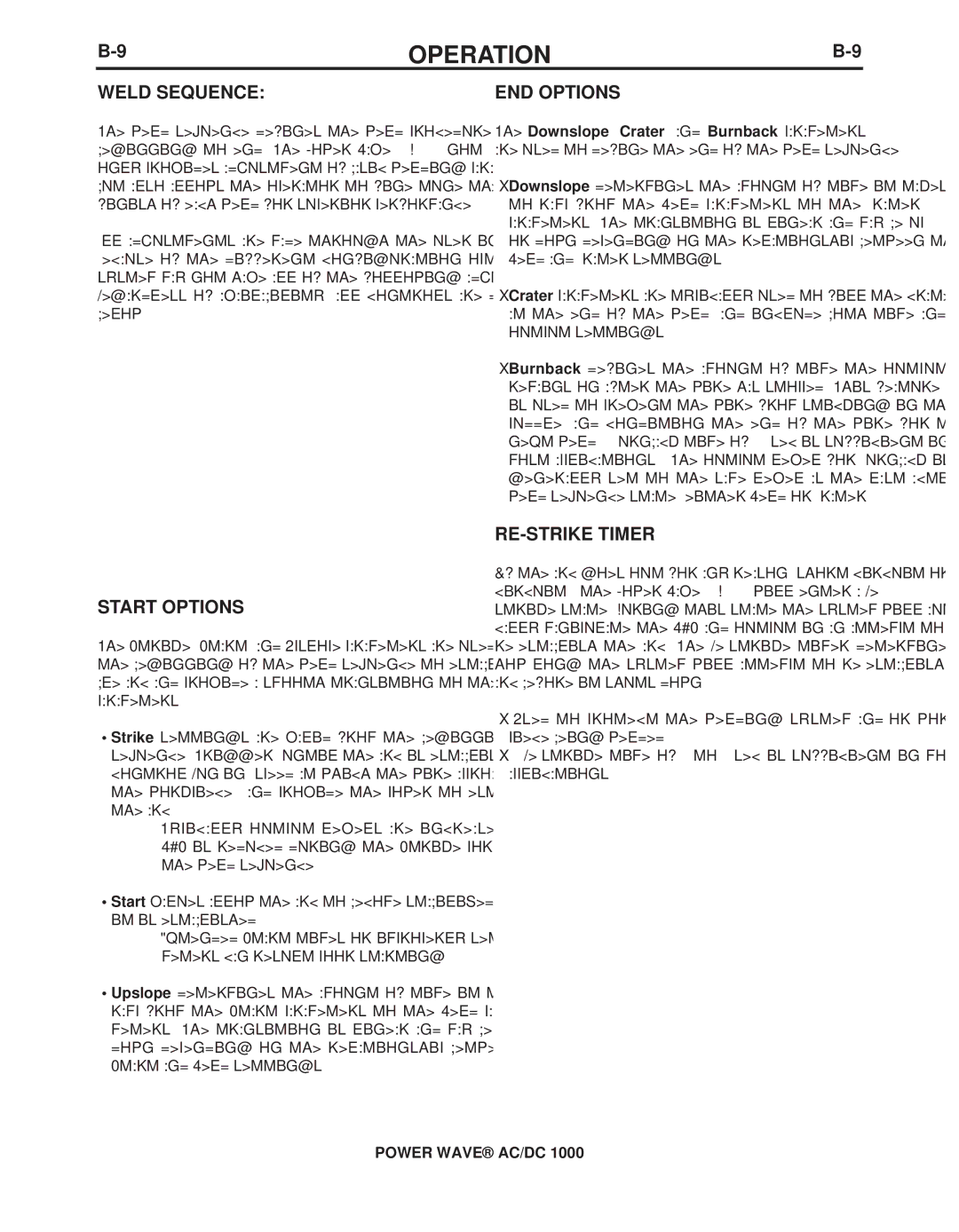
OPERATION | ||
|
|
|
WELD SEQUENCE:
The weld sequence defines the weld procedure from beginning to end. The Power Wave AC/DC 1000 not only provides adjustment of basic welding parameters, but also allows the operator to fine tune the start and finish of each weld for superior performance.
All adjustments are made through the user interface. Because of the different configuration options, your system may not have all of the following adjustments. Regardless of availability, all controls are described below.
Weld Sequence
TM
Weld Sequence adjustments made possible by Wavefor m Control Technology
Start | Upslope | Weld | Downslope |
| Crater | ||
(Strike) |
|
| (Burnback) |
t | Time | |
Outpu | ||
|
Weld sequence adjustments allow the operator to fine tune the start and finish
of each weld for superior performance.
START OPTIONS
The Strike, Start, and Upslope parameters are used at the beginning of the weld sequence to establish a sta- ble arc and provide a smooth transition to the welding parameters.
•Strike settings are valid from the beginning of the sequence (Trigger) until the arc is established. They control
-Typically output levels are increased and WFS is reduced during the Strike portion of the weld sequence
•Start values allow the arc to become stabilized once it is established.
-Extended Start times or improperly set para- meters can result poor starting
•Upslope determines the amount of time it takes to ramp from the Start parameters to the Weld para- meters. The transition is linear and may be up or down depending on the relationship between the
Start and Weld settings.
END OPTIONS
The Downslope, Crater, and Burnback parameters are used to define the end of the weld sequence.
•Downslope determines the amount of time it takes to ramp from the Weld parameters to the Crater parameters. The transition is linear and may be up or down depending on the relationship between the Weld and Crater settings.
•Crater parameters are typically used to fill the crater at the end of the weld, and include both time and output settings.
•Burnback defines the amount of time the output remains on after the wire has stopped. This feature is used to prevent the wire from sticking in the weld puddle, and condition the end of the wire for the next weld. A Burnback time of 0.4 sec is sufficient in most applications. The output level for Burnback is generally set to the same level as the last active weld sequence state (either Weld or Crater).
RE-STRIKE TIMER
If the arc goes out for any reason (short circuit or open circuit), the Power Wave AC/DC 1000 will enter a Re- strike state. During this state the system will automati- cally manipulate the WFS and output in an attempt to
•Used to protect the welding system and/or work piece being welded.
•A
POWER WAVE® AC/DC 1000
